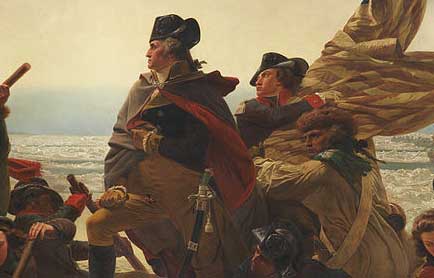African Americans During the Revolutionary War

The African slave trade transported more than nine million people to the New World. During the colonial period, four or five Africans immigrated for every European. Slavery became predominant only in the southern colonies, although it existed all over the colonies. In New England, there were no staple crops and, thus, no need for large amounts of labor. In the symbiotic relationship between England's textile manufacturers and American southern plantation owners, however, slave labor was key. Slavery gradually took over the much of the role of indentured servanthood, due to the lower cost of slave labor and the fact that it was easier to identify escaped African slaves as such, by virtue of their skin, than to identify runaway European indentured servants.
Perhaps to justify the large-scale violation of human rights which had become natural to many Americans, a "big lie" was propagated about the African civilizations from which people were taken as being backward, savage, amorphous organizations. This "myth of the negro past" was not shattered in the colonial period, although now we know that West African civilizations generally supported societies with complex social, political, and economic systems, as well as highly developed artistic and craft traditions. Most West Africans were animistic, and religion was a major part of life.
It is not clear how much of West African cultures were retained by Africans in America. In what became the United States, there was a lower proportion of blacks to others, relative to the Caribbean, and there were no major enclaves of runaway slaves in which institutions could develop. In addition, evidence suggests that many American slave owners deliberately purchased slaves from different African tribes to inhibit cooperation among them. Today, it is difficult if not impossible to retrace the origins of African-Americans whose ancestors were slaves. South Carolinian slave buyers preferred Senegambian and Angolan slaves, but did not want Ibo slaves (from today's Nigeria), believing that they had a high suicide rate. In Virginia, Ibo people made up about 40% of the slaves. In the Sea Islands, off the coast of South Carolina and Georgia, the African linguistic heritage of the slaves was strongly present in their English vocabulary and syntax, which was retained through the centuries until at least the 1900's. Also, some folk stories, craft techniques, music, and other cultural-artistic inheritances survived in the African-American from the African. Centuries after the birth of the nation, W. E. B. DuBois would write, "one ever feels his twoness-An American, a Negro, two souls, two thoughts, two unreconciled strivings ... the history of the American Negro is the history of this strife."
Nevertheless, there were signs of hope for the African-Americans during the Revolutionary era. Black people were fighting on both sides of the war. Cultural figures, such as Phillis Wheatley the poet and Benjamin Banneker the astronomer and almanac writer, rose in the years surrounding the Revolutionary War. In Massachusetts, victories were won on the legal front. In 1781, two slaves, one of whom, Elizabeth Freeman, was a woman, successfully sued for freedom in the case known as Brom and Bett v. Ashley. This case, along with the Quok Walker case of the same period, helped establish the end of slavery in Massachusetts.
 >
>